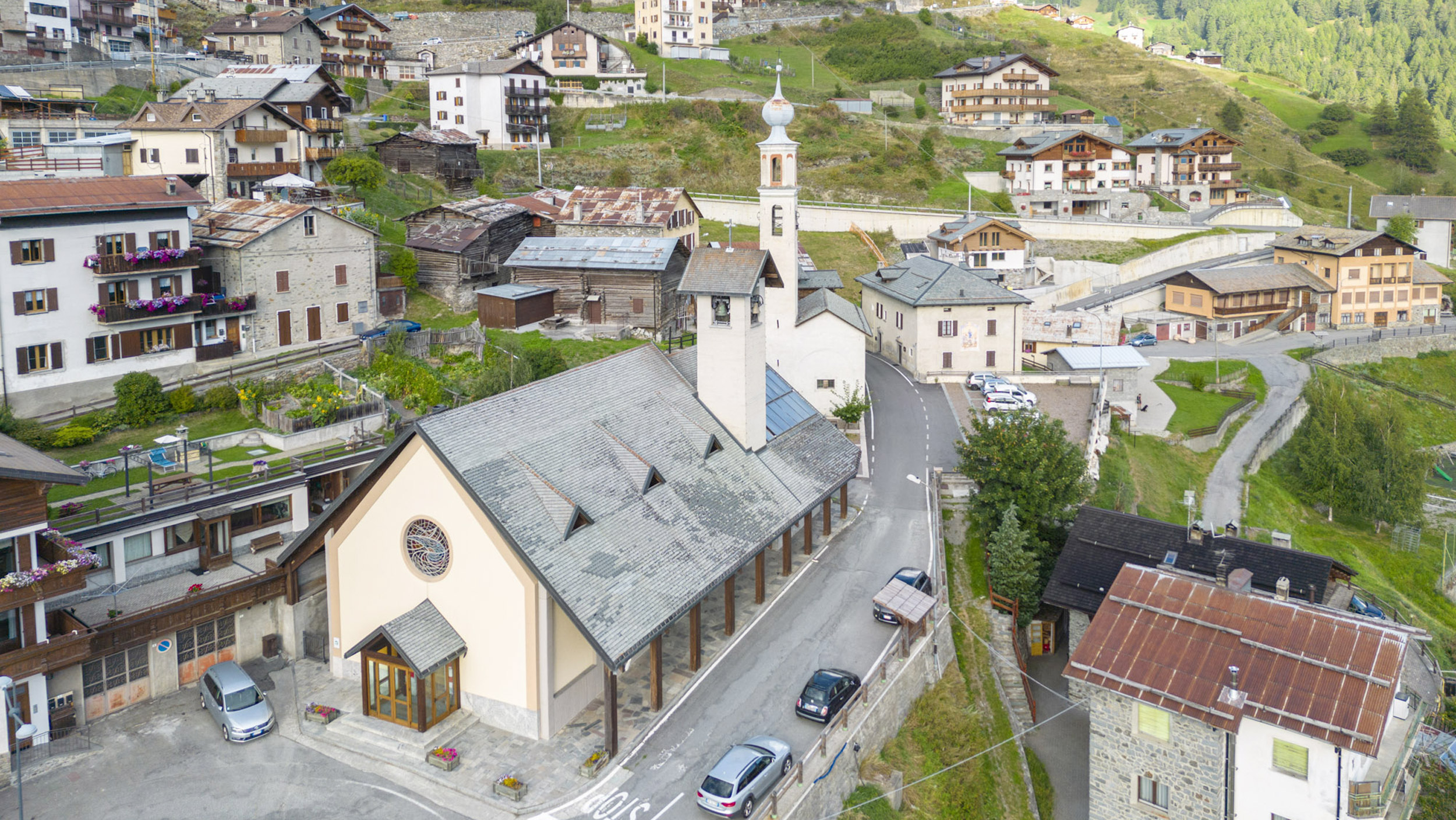P.za Madonna del Carmine, 23030 Plazzola in Valfurva (SO)
After crossing the bridge over the Frodolfo and passing through the village of Sant’Antonio, the Cammino Mariano makes a hairpin turn and returns to Bormio through pastures in the Stelvio National Park at the foot of Monte Réit.
Originally called Contrada dei Monti, the area was formerly populated only during the summer when herders migrated with their livestock to the high pastures. Later, permanent settlements were established.
Religious devotion has left clear traces in the area: each village has at least one aedicula (santella), a crucifix, or a votive fresco. The church was built in the early 17th century midway up the slope. Dedicated to the Madonna, it eventually led to a new name for the contrada: Madòna di mónt (Madonna dei Monti). Now deconsecrated, its onion-domed belltower (1747) remains a reference point for the local rural village: a picturesque place inviting discovery.
The contrada became an autonomous parish in 1935 and outgrew the old church. A new one was built after the war, recovering furnishings and other objects steeped in meaning: chalices, processional crosses, the baptismal font, and various carved wooden decorations. The cabinet in the sacristy is a thing of great beauty: it is relatively small but embellished with finely crafted details such as the atlantes, baskets of fruit, and the doors with the Angel and the Virgin of the Annunciation.
Naturally, the parish church also has newer furnishings. The railings, the Via Crucis, and the Neogothic triptych side altars are the work of the Sandrini company of Ponte di Legno.
Standing out at the back of the presbytery is the glorious main altar from the earlier church. Its niche once held a wooden statue of the Madonna dressed in real clothing and long considered miraculous. The people prayed to her to save them from poor hay or wheat harvests, overly cold spring weather, or summer droughts. It must have been a fine piece of work; the locals had travelled to Milan in 1638 to purchase it. Unfortunately, it was removed in 1901 by order of the bishop and its description is lost to memory. 4
A statue of the Virgin of Carmel, also dressed in real clothing, has survived in a small chapel in Fantelle, at the start of the trail that leads into Val Zebrù.
Leaving behind the last houses of Madonna dei Monti, the trail climbs into a larch forest blanketing the slopes giving you the sensation that you can almost touch the dolomitic ridge of Monte Réit.







